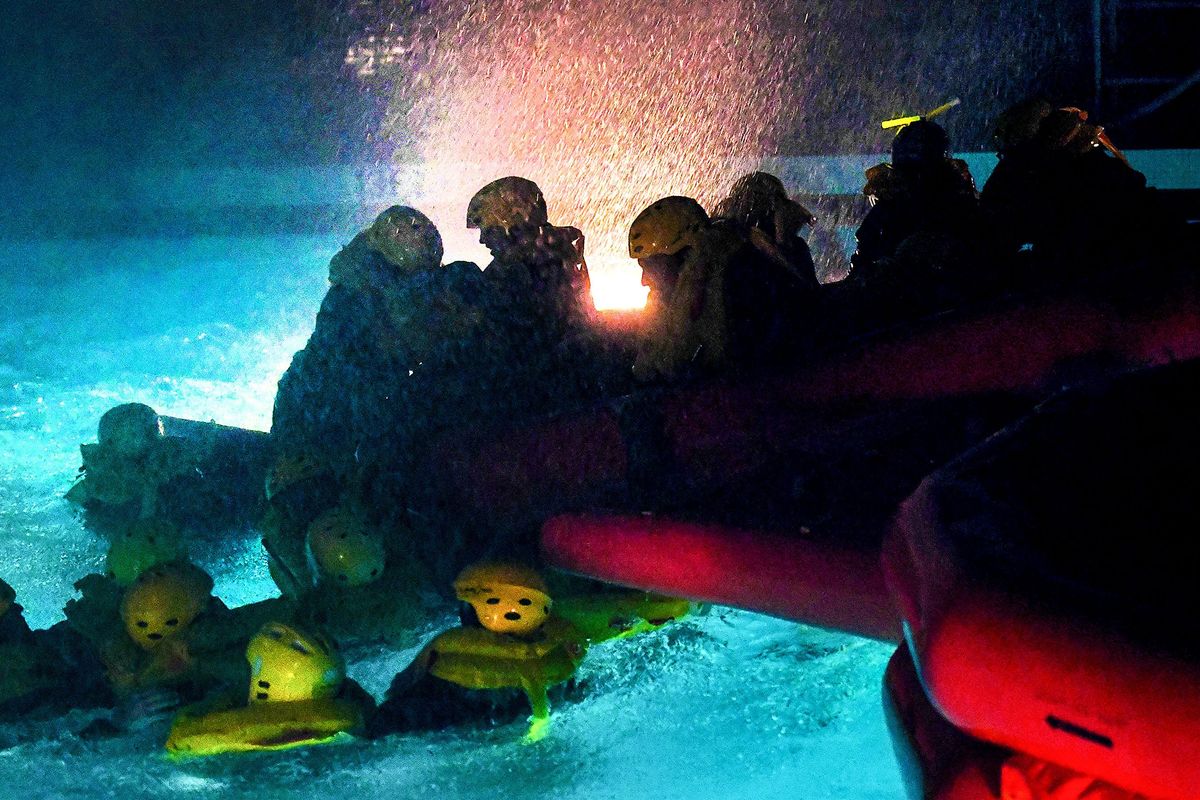Trio of NASA astronauts hone water survival skills at Fairchild

Thunder claps, blaring emergency sirens and rain plasters a group of life-vest clad trainees huddled in an orange life raft. Winds reaching up to 50 mph blast them from the side, and fog obscures the dark water.
The scene doesn’t take place in the ocean, but a simulation run at Fairchild Air Force Base in Spokane. The rain comes from the ceiling, speakers blast storm noises, and multiple assistants stand at the side of the pool, spraying the trainees with a firehose.
On Thursday, the water survival team at Fairchild had some special guests – three NASA astronauts there for training. Among them was U.S. Navy Commander Victor Glover, Marine Lt. Col. Nicole Mann, and Navy Commander Josh Cassada.
Glover stepped out of the pool Thursday afternoon with a smile, and a puddle of water trailing behind him. He then announced he would only have a few minutes before he needed to return to training.
Water survival is a key part of training for astronauts, who regularly end up in the ocean for both planned and emergency landings. Glover and his teammates have spent years preparing for space, and even after two years of intensive training he won’t let up.
Because of the effect space can have on the body, astronauts face special challenges regular aviators don’t – and that means even more rigorous training.
“The plan is for you to land in the water,” said Glover. “Except you’ve been in space for several weeks.”
The three haven’t been to space yet, but will be the next in line to go – so Glover takes this continued preparation seriously. “We’re next,” he said with a grin.
Glover, Mann and Cassada’s visit marks the third trip NASA astronauts have made to Fairchild for training, said Col. John Groves, commander of the 336th Training Group which runs the SERE school program, including the water survival training.
Training mechanisms include a helicopter simulator, known as “the dunker,” that suspends trainees above the water before lowering them into the wavy, windy pool. It can also flip sideways, providing an extra challenge as it sinks.
Wind from the side of the pool mimics a storm, and gusts from above replicate the feeling of a descending helicopter. A giant, several-thousand-pound ball produces waves, and trainers shut off the lights to add to the confusion.
The facility is already well-equipped for training any Air Force aviators who might end up landing in the water, Groves said, so it made sense to have NASA use the program as well.
“These are the guys that live and breath water survival,” he said, “So why not have NASA?”